Dubai: The Middle East’s artificial sweetener left me hungry for the real Islam
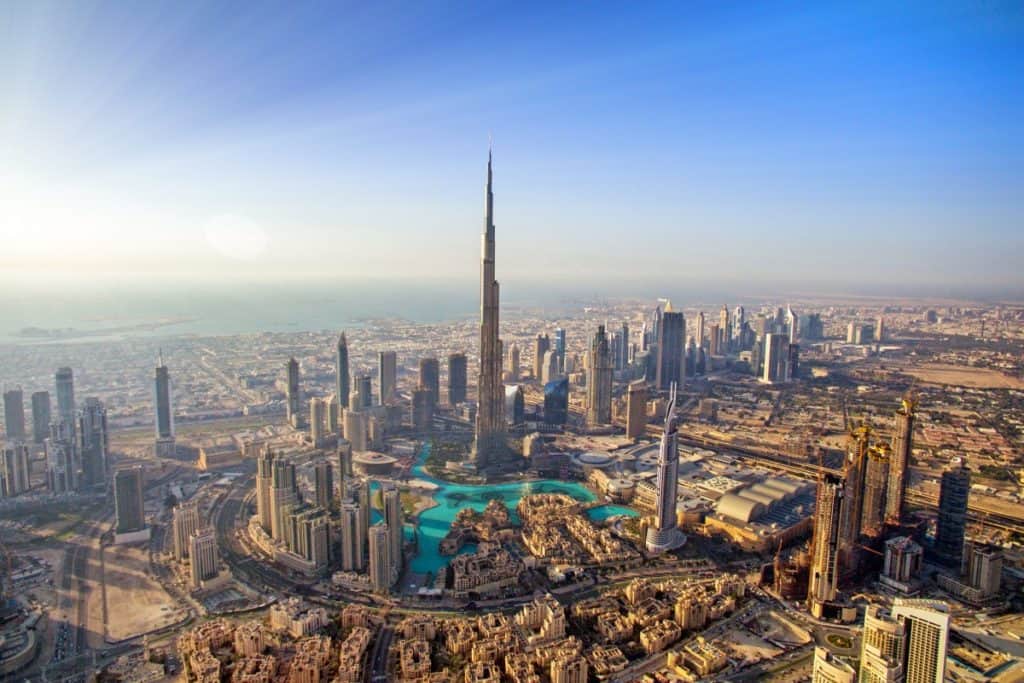
DUBAI, United Arab Emirates — Is the Burj Khalifa really the world’s tallest building or is it a giant middle finger to the rest of the world?
Yes, Dubai, I now get it. You’re more opulent, extravagant and glitzier than anyplace else on the planet. You build it because you can. It doesn’t matter that you don’t need a 70th shopping center. You have the money — lots of money, lots and lots of money — so you will. The world can just watch and look up to you.
Way up to you.
You have more buildings at least 820 feet, 1,100 feet and 2,200 feet than any other city, topped by Burj Khalifa’s 2,722. That building is more than 900 football fields high. Last spring I climbed a mountain in Tajikistan that wasn’t that high.
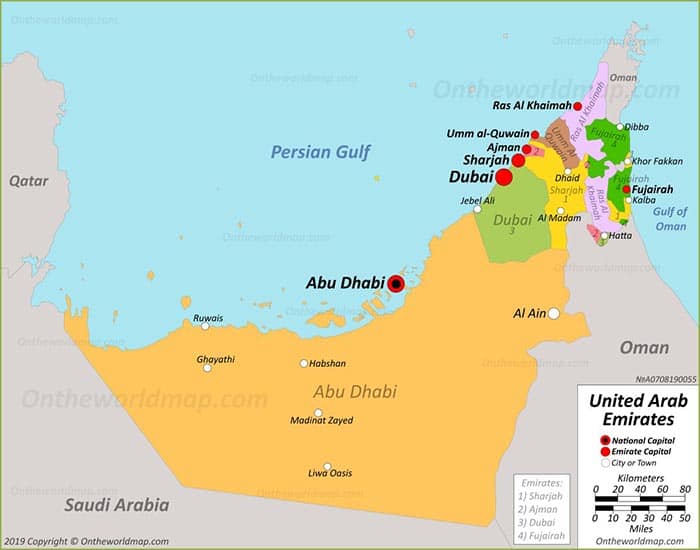
But must you be so obnoxious about it? Dubai’s wealth is so in your face. It’s like a young gold digger with fake breasts, fake lips and fake hair, wearing enough bling to blind a bald eagle, loudly clicking her Manolos through a shopping mall. But like any gold digger, she didn’t earn that bling herself. Dubai had others do it, too. The mass labor force is this city’s dark and dirty secret, one of many that few who come to see and be seen ever see.
I was one of them.
Marina and I came up on a day trip during a recent four-day weekend in the United Arab Emirates. We spent three days in Abu Dhabi, the UAE’s glorious, laid-back and beautiful capital. We had to see what all the fuss was about Dubai, the airlines’ gateway to Asia and Australia and the global hub of the Middle East.

Yes, a city really does exist that:
- Has a Gross Domestic Product of $108 billion.
- Has — it’s true — 70 shopping centers, including the Dubai Mall, the world’s largest at 5.4 million square feet.
- Had visitors spend $30.8 million dollars in 2018, according to Mastercard, topping the world for the fourth year in a row. That’s an average of $553 per day.
- Has an indoor ski slope.
- Has four water parks, featuring the Surf’s Up Wave Rider and the Aquaconda, the world’s largest diameter raft slide at nearly three kilometers.
- Has an artificial island, spread out like a palm frond with each leaf lined with luxury houses, topped at the end of one with the biggest water park. Two more islands are under construction.
That’s not all. My pre-trip research showed locals driving their Jaguars with a pet jaguar in the passenger seat. Houses float on man-made seas. People hike in an indoor rain forest.
These people have more money than Wall Street. They swim in it like tourists sloshing down one of Dubai’s countless number of water slides. It reminded me of one time in Aruba where I met a Jamaican architect who built a house for a rich Emirati in Dubai. The owner wanted him to include a bowling alley. The owner had never bowled. He wanted to try it. He had a bowling alley built to try bowling.
Keep in mind my view of Dubai is a mere snapshot. It’s difficult to capture a city on a day trip. However, first impressions still count. Mine weren’t great. Here is the good and the bad of one of the world’s most artificial cities:
***
Despite UAE’s cities appearing like gold goblets on a sandy beach, public transportation is among the cheapest in the world. Our two-hour bus ride from Abu Dhabi up the Persian Gulf coast to Dubai cost all of 30 dirhams (about $8 euros) each round trip. The Abu Dhabi bus station, with its slanted roof and sunlight streaming through huge windows, was so clean we could eat kabob off the floor.
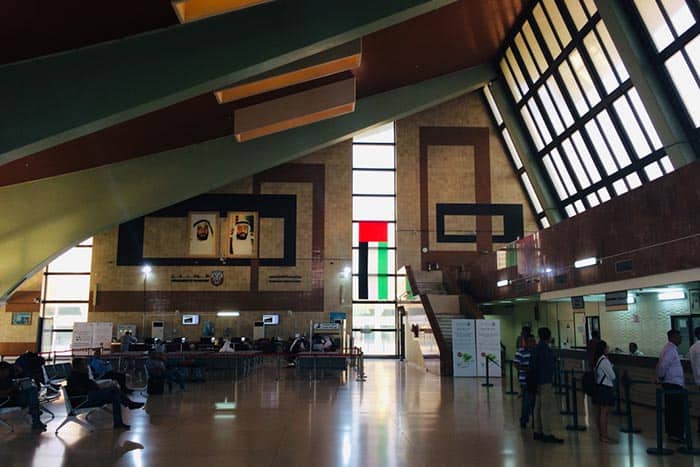
The journey north showed wealth isn’t confined to UAE’s cities. On the spotless freeway, with nary a rock or hole, our huge, modern, air-conditioned bus raced past beautiful houses of gold-colored brick and long balconies. Palm trees lined the road. So, seemingly, did shopping malls.
We passed a racetrack — a camel racetrack — and a sign that shouldn’t be as odd as it seemed: Saudi Arabia, next right.

We stopped at the Battuta bus station on the far south end of Dubai but already we could see the famous Dubai skyline in the distance. Dubai is huge. Its 3.1 million people are spread over 1,588 square miles. That’s 2 ½ times bigger than Houston.
Public transportation is very important unless, of course, you have a Jaguar. An all-day metro pass cost only 22 dirhams ($6). Dubai’s elaborate Metro subway snakes its way up through downtown and across famed Dubai Creek to the airport in cars so shiny I felt I was on a first-class train in Switzerland. We boarded and I found myself the only man in the car. Turns out, the first car of every train is reserved for women and children, just to avoid harassment.
No, Western world, not all Muslim women are oppressed.

Our first destination on our whirlwind self tour was the Palm Jumeirah, one of Dubai’s many signature landmarks and one of the weirdest neighborhoods in the world. The Metro dropped us off after a few stops and we walked through a series of skywalks that I think I saw once in “Blade Runner.” One emptied us onto a tram stop from where we wound our way toward the coastline. Getting out, we had to hike for 10 minutes down long, covered hallways, corridors and even a massive parking garage to reach the monorail that’s the only way to the Palm.
Unless, of course, you have a Jaguar.
The Palm is one of those three artificial islands designed like a palm frond. We whisked up the road serving as the palm’s “trunk” and on both sides of us through the rounded glass windows we saw beautiful apartment houses that looked like little sand castles with swimming pools. The small roads leading to the houses were lined with palm trees and red clay jogging paths.
They call this the Golden Mile. It was built with 5.5 million cubic meters of rock and 94 million cubic meters of sand dragged from the deep sea. Sounds expensive? Due to a real estate crash in 2008, houses are remarkably affordable in Dubai. A quick peruse of real estate prices showed one two-bedroom apartment listed as 1,787 square feet with a sea view was only 1,500,000 dirhams. That’s just over $400,000. My condo in Denver isn’t much less than that.
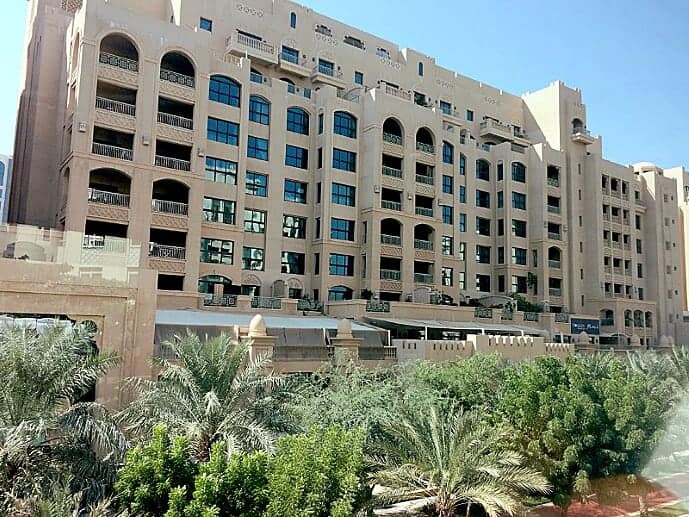
The monorail stopped at the very end of the island. Over us stood the trademark giant arch of Atlantis, the biggest waterpark in Dubai. I felt just as I did when I was 8 years old at Disneyland my first time staring up at the Matterhorn.
A steady procession of people poured into the entrance. Delaying the frenzy, Marina and I walked along the spotless boardwalk of red clay, lined with palm trees with a sparkling white guardrail separating the path from the rocks and Persian Gulf. It was remarkably peaceful with little traffic and not much noise. We could’ve been in a fishing village, which Dubai once was.
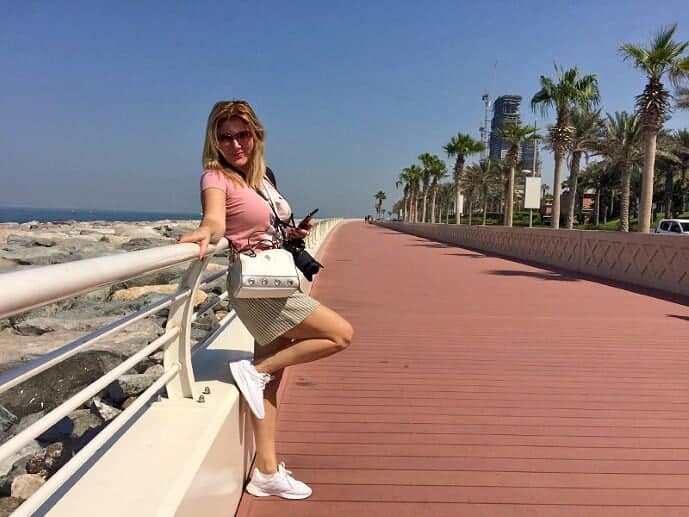
That tranquility ended fast. We entered the Atlantis complex which is actually a hotel called the Atlantis The Palm, Dubai. Completed in 2008, it has 1,548 rooms built on two wings adjacent to the 600-foot-high tower, kind of like a giant sunscreen standing on end.

The entrance was just another high-end UAE mall. The Avenues has 23 restaurants and bars and high-end boutiques such as Rodeo Drive, Mont Blanc and Stefano Ricci. The huge hallways were packed. Every nationality seemed to be going to and from. Northern Europeans. Japanese. Chinese. East Indians. Africans. Emiratis in keffiyeh head scarves. Emiratis women in all black. Emiratis in western clothes.
Most of us were headed to the Aquaventure Water Park which costs 72 euros and was guarded by a tall security guard in a sharp black suit that looked designed by Versace. With a public beach under construction, we could only look outside. It was like looking into a people zoo. We gazed out at a maze of water slides and pools snaking around shelters holding restaurants and snack bars. It was all covered by a forest of palm trees.
It had all the Islamic culture of a country western bar. I don’t remember ever hearing Arabic. And it was so crowded, we got claustrophobia just trying to return to the monorail and get out of there.
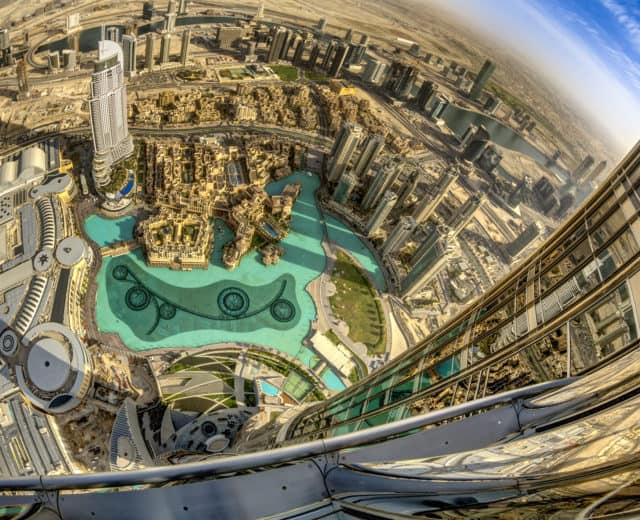
Back on the Metro, we sped through downtown and I noticed something about Dubai’s towering skyline. The buildings, despite nearly touching some of the closer stars, were hard to see. The air pollution was thick as soup. It looked like Los Angeles in the 1960s. This beautiful, futuristic skyline right out of a “Star Wars” film was covered by a gray cloud. It’s not the fog that gives San Francisco’s skyline such a romantic touch. This was smog, dirty, gray, thick smog.
Greenpeace recently ranked Dubai as the 10th most polluted city in the world and one of 50 with nitrogen oxides, poisons in the air that cause lung cancer. However, the city does have a soul. Last month it was one of 35 cities pledging to improve its air quality and introduce new environmental policies by 2025, showing regular reports to the public.
Despite air that made Dubai look like it’s in a perpetual dust storm, you’d have to wear a blindfold not to see Burj Khalifa. As we flew by a maze of snow-white freeways, we passed its massive steel base. Bending over and looking straight up, I could only see about 1,000 feet of it. In other words, from the road, you don’t even see half of the world’s tallest building.
From the street, it looks like a spaceship from about the year 2130. It consists of nine adjacent towers, each one bigger than the one next to it. Built in 2009, it was part of the UAE government’s quest to diversify from its dependence on oil. It didn’t hurt that having the world’s tallest building brought some worldwide attention. (For an idea of high this building really is, click on this scene from “Mission Impossible: Ghost Protocol.” Warning: Those afraid of heights should skip to the next paragraph.)
The Burj Khalifa, named for UAE president and Dubai emir Khalifa Bin Zayed Al Nahyan, was part of a massive downtown development that included 30,000 houses, nine hotels, 7.4 acres of parkland, 19 residential skyscrapers, the Dubai Mall and the 30-acre man-made Burj Khalifa Lake. The 163-floor Burj Khalifa has 57 elevators with Floors 77-108 residential.
Want to live in the world’s tallest building? One 500-square-foot studio cost 1.7 million dirhams, about $460,000. In San Francisco that buys you a closet in the Tenderloin.
“Anything this perfect, they’re hiding something,” Marina said. “Nothing is perfect.”
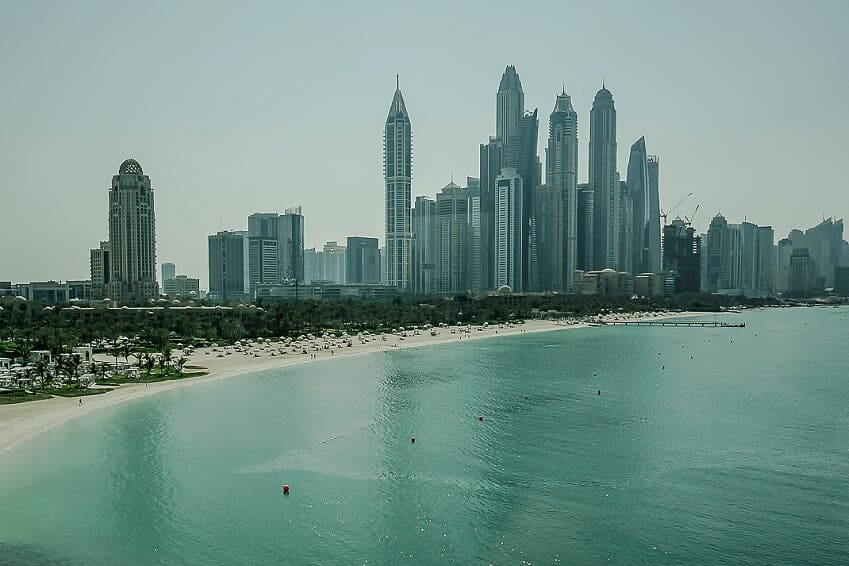
She’s right. Dubai is hiding something. It’s hiding a lot.
To understand Dubai, you must understand its history. According to one theory, its name comes from the Arab proverb “Daba Dubai” which means “They came with a lot of money.” In the 18th century it was a simple fishing village and in the early 19th century it served as a port of trade for goods going to Asia. It had a population of 700-800.
In the 20th century it became a pearl center until the 1930s when the Depression and the rise of cultured pearls killed its pearl trade. Dubai fell into poverty and it even had a brief war with Abu Dhabi in 1947 over a border dispute.
However, while oil was discovered in Abu Dhabi in 1960, Dubai became a major gold trading center. By 1966, Dubai had imported more gold than any country outside France and Switzerland. After oil was discovered in Dubai in 1965, the UAE formed in 1971 and Dubai’s population grew from 59,000 to 397,000 from 1968-75.
Today, oil doesn’t fuel Dubai. Gold does. Known as the City of Gold, Dubai is the world’s fastest growing free zone. In 2011 it traded 581 tons of gold at an average cost of $1,455 per ounce. Oil and gas make up less than 5 percent of Dubai’s revenue. In fact, observers say Dubai’s oil reserves will be empty in 20 years.
Instead, real estate and construction make up 22 percent of its revenue with trade adding 16 percent. Dubai’s construction built this adult Disneyland with headline-catching buildings and relaxed liquor laws in the countless number of hotels. The tourists poured in. Last year it was the fourth most visited city in the world with 15.9 visitors.
Next year, when Dubai hosts Expo 2020, the city expects to host 20 million visitors.
But hidden under all the steel and glass and palm trees and water slides are the people who built it all. Emiratis make up only 10 percent of Dubai’s population. Many of the rest are imported construction workers. Men stormed Dubai’s shores from India and Pakistan and Sri Lanka and Egypt, to name a few countries, all looking to cash in on this growing city printing dirhams by the minute.
However, the working conditions leaking into the public domain have taken some sheen off Dubai’s glam. Human Rights Watch called the working conditions for some of the 250,000 foreign laborers as “less than humane.” Many were working 12-hour days, sometimes in 122-degree heat. One British journalist went undercover and discovered four to five laborers living in studio apartments. Much of it is documented in a 2009 film entitled, not so subtly, “Slaves in Dubai.”
Few know about it because few can talk about it. Despite Dubai opening its arms to visitors, especially those with deep pockets, it closes the mouths of the locals. In the UAE, free speech is whispered. Citizens and journalists can receive severe sanctions if they criticize the royal family or local laws and culture.
I asked a friend who moved to Dubai three years ago for an interview about life in that city. He declined. He said he could be thrown in jail if he said what he truly thought. He even warned me about writing this.
My biggest complaint with Dubai is it’s easier to find rain than local culture, a conclusion reached primarily due to our lack of time. The city does have cultural centers and cultural groups but with one day, we headed to the one cultural center famous in Dubai.
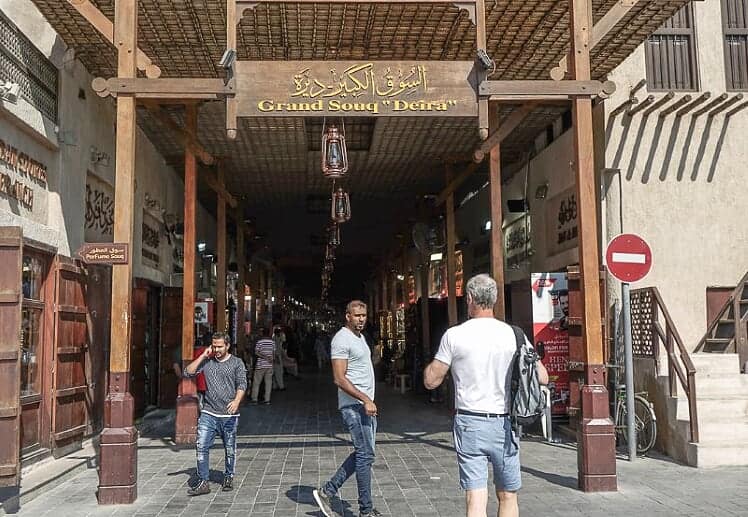
The souqs.
These are the collection of open-air markets filled with different sections: gold, spice, perfume and textile. They line both sides of the Dubai Creek where dhows from East Asia, China, Sri Lanka and India used to drop cargo dating back to the early 19th century. Now a UNESCO World Heritage Site, Dubai Creek is a magnet for the intrepid traveler looking for a hint of Islam.
Arriving by Metro, we emerged starving. Dubai is famous for its cuisine and with 90 percent of the population from someplace else, its international choices are among the best in the world. Unfortunately, none of those choices is near the souqs. We wandered around the crowded, busy surrounding streets lined with cheap retail stores for 30 minutes before we found Atlantis Turkish.
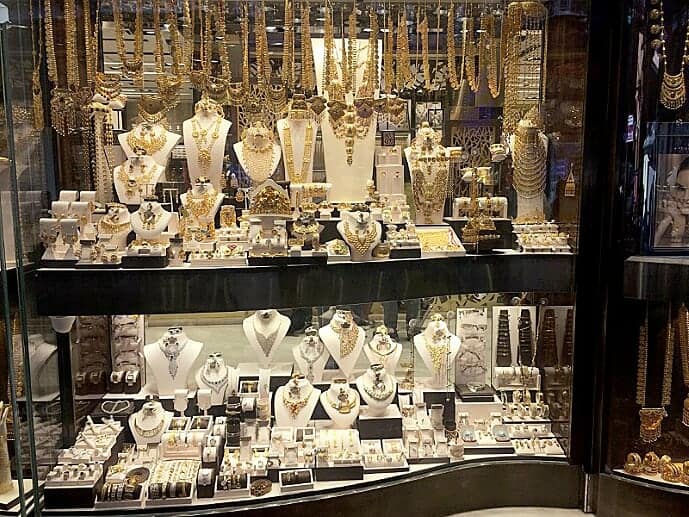
It’s a Turkish dive with authentic Turkish dishes and our first glimpse of real locals. It was the first time in Dubai we heard Arabic. My very good meat shawarma wrap and grape juice was all of 22 dirhams (about $5).
So much for bargains.
We headed back to the souqs while dipping our heads into some of the souvenir shops along the outskirts.
“It’s all made in China,” Marina said. “They only make petro here.”
Walking into the souqs we felt like gazelles walking through a lion’s den. Every merchant wanted a piece of us. Every one tried getting us into their shop with worse come-ons than in a fraternity house.
“CHEAP, CHEAP PRICE!”
“YOU NEED A WATCH!”
“YOU LIKE REAL GOLD?”
Walking into the gold souq we had to adjust our eyes to the bling. It’s lined with jewelry stores, the display cases filled with every bauble imaginable. Silver shops shared space with the gold and Marina was in the market for a silver ring for a friend.
“GOOD, GOOD PRICE!” said the Indian merchant, one of the thousands from the southwest state of Kerala. No. BAD, BAD PRICE! A simple silver ring went for 250 dirhams (about $65). Marina did find some small silver earrings for 123 dirhams (about $30) and through easy bargaining that took less than 30 seconds, got them down to 100 ($25).

The souqs, however, were a major disappointment in their lack of variety. Unless you’re shopping for jewelry or need spices for dinner, there’s no reason to visit. I thought the spice souq would be worthy of a few pictures, at least. What we got was a lesson in foreign exchange.
In many shops they let you taste or smell the hundreds of spices available: chamomile flowers, dried hibiscus, sumac, cardamon, thyme. In one shop I swooned over a whiff of tantalizing saffron. I asked how much. He said one gram is one dirham (about 30 cents). Hmmm. Finally. A bargain. I had him pour out two little bags and he handed me the bill.
It read 269 dirhams. That’s $67 for saffron! I had totally miscalculated. I confused one gram with one eto, which is Italian for 100 grams. Those two little bags equalled about 270 grams. Marina and I fled like shoplifters, leaving the poor merchant hanging with nothing in his hand but a little spice.
I felt awful about my inexcusable lack of math skills wasting this man’s time. As we headed to the Metro station, we kept looking over our shoulder in case he was following us with one of the daggers I couldn’t find on sale.
We will always look over our shoulder at Dubai. Never forward. First impressions aren’t always accurate and maybe mine weren’t. I have friends who visit Dubai two or three times a year. Maybe if Marina and I have a connection on our way to Asia, we’ll spend a night.
But as we headed down the coast back to calm and beautiful Abu Dhabi, I kept thinking of Tom Cruise hanging off the Burj Khalifa in “Mission Impossible: Ghost Protocol.”
Is Dubai really worth all that?


March 6, 2020 @ 10:44 am
I enjoyed your article. Kidney stones sound very painful, hope you feel better.
March 15, 2024 @ 7:25 am
Having lived in Dubai 3 months, what I liked was the flux of nationalities ( mostly Asian , some European, some Emiratis ) existing together in this newly build town. The souk indeed is bs for bs tourists.